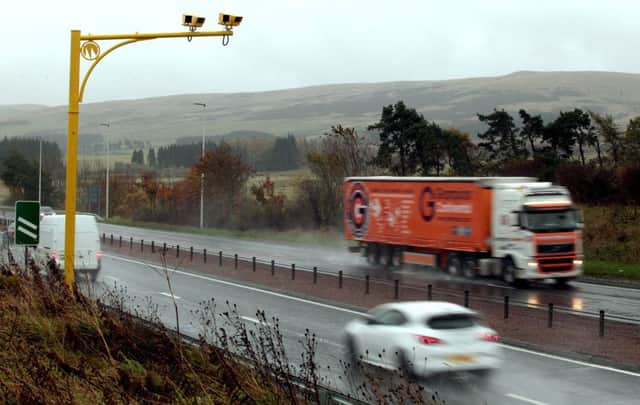Drivers will just have to learn to love speed cameras '“ Alastair Dalton


Police have been trying to stop speeding - and motorists have been trying to evade their speed “traps” - for more than a century.
It led to the formation of the Automobile Association and a system of patrollers’ salutes and signals to warn errant drivers.
Advertisement
Hide AdAdvertisement
Hide AdHowever, the success of a series of average speed cameras in Scotland has taken the wind out of the sails of protestors, most notably on the A9, where predictions of all sorts of chaos failed to materialise.
Once behind the wheel, no one likes to be impeded, especially when you think it unnecessary. This has led to some believing they should decide what speed is safe. Perhaps it’s all part of the arrogant and selfish “my car, my space, to hell with everyone else” attitude some motorists appear to display.
But speed cameras aren’t there to cut motorists down to size without good reason, they are simply enforcing the law, which some seem to think is optional, or doesn’t apply to them.
In so much of the debate over cameras, one simple fact seems to have been overlooked - you just need to keep to the speed limit.
I can appreciate road safety concerns about individual speed cameras. Some drivers suddenly spot them and slam on the brakes, even if they are below the limit, creating alarm for vehicles behind - including those keeping a safe distance.
I’ve often wondered why such cameras have to marked anyway. Speed limit signs should be sufficient warning.
However, average speed cameras have in the main brought very positive improvements. The A9 is no longer a racetrack where you were bound to witness at least one insane - and heart-stopping - overtaking manoeuvre somewhere between Perth and Inverness. It’s a far more pleasant journey now and everyone’s no longer itching to get past you, even though some car drivers seem to err on the side of caution or mistake the 50mph lorry speed limit signs as applying to them.
It’s not surprising that transport secretary Michael Matheson sees the merits of further schemes, which have now been tried and tested in Scotland for 13 years since the A77 system.
Advertisement
Hide AdAdvertisement
Hide AdThe criteria for deploying cameras has also been revised, including a greater focus on collisions involving cyclists and pedestrians.
There is also more flexibility on locating cameras in highly-populated areas.
Transport Scotland, which runs the Scottish Safety Camera Programme, said: “These changes are aimed at ensuring camera deployments more closely align with our focus on delivering a future where no-one is killed on our road network and the injury rate is much reduced.”
Ultimately, vehicle speeds are likely to be controlled remotely, and that could happen even before the widespread use of autonomous cars, lorries and buses.
Until then, Mr Matheson has signalled the likely extension of systems that have proven their worth, with the first year of the latest scheme on the A90 between Dundee and Stonehaven likely to have confirmed official thinking.
It looks like those still harbouring misgivings about the technology will just have to learn to love the cameras - and try to see the benefits to both them and others.